14 Recommendations to Improve Conversions our Clients are Initially Reluctant to Hear (but Truly Appreciate when Implemented)

October 16, 2023
This year, mindberry celebrated its 14th anniversary. Reminiscing about certain aspects that remained constant over the years, we compiled a list of recommendations our clients initially tend to resist or require convincing for. However, once we manage to persuade them, they absolutely love them. Maybe some of our clients’ hesitations strike a chord with you and we can provide a gentle push for you to reconsider them.
List of 14 things some of our clients dislike hearing from us at first:
1. Reach out to your customers for feedback

Why we recommend that companies reach out to their customers:
Customer feedback can help you understand the worries they were facing before they became your customer. Your prospects are most likely held back by the same obstacles.
Based on our experience, customers are more than willing to offer feedback when approached appropriately, and it is one of the most effective methods to obtain valuable insights for enhancing both customer experience and conversion rates.
2. Get to know YOUR users rather than just copying what competitors do
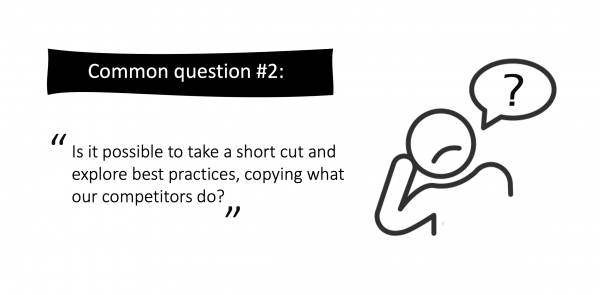
Why we recommend that companies get to know their own users:
Every company has a unique customer base with specific needs, preferences, and pain points. Blindly copying competitors may not effectively address the most crucial concerns of your audience. Ultimately, the goal is to identify ideas that yield the biggest uplift for your business. We’ve run hundreds of AB tests and consistently observed that optimization ideas rooted in specific user insights generate the most significant improvements, fostering sustainable growth and competitive advantage. We can wholeheartedly say that user research always pays off.
3. Don’t approach different segments with a “one-size-fits-all” strategy
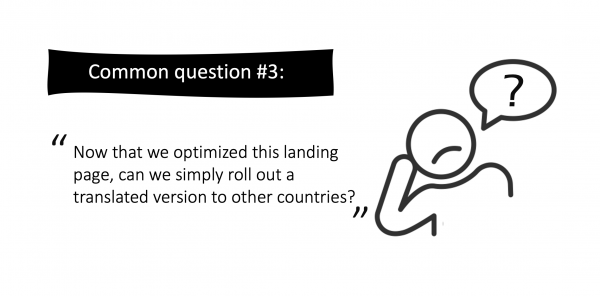
Why we recommend that companies tailor solutions to the specific customer segments:
When conducting user research, it is essential to consider the diverse needs of all relevant user groups. Even within your own customer base, there may be differences that require a customized approach. Different countries, languages, user groups or differences in access to your product or service (such as mobile or desktop) may call for tailored solutions.
Drawing from our experience, user research can swiftly and effectively reveal which elements work universally for all user groups and where adjustments are needed for specific segments. Small tweaks can often make a significant difference. Additionally, we strongly recommend conducting separate A/B tests for each segment rather than assuming that a successful outcome for one group will automatically translate to others.
4. Ensure regular exchange with the customer support team
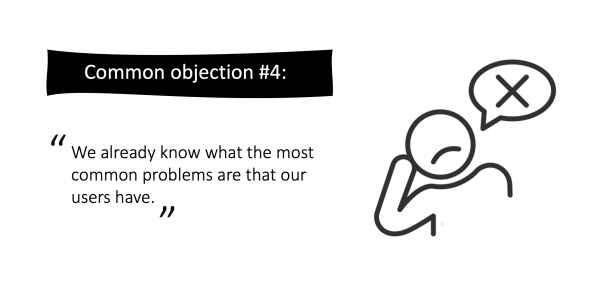
Why we recommend that CRO teams foster collaboration with the customer support team:
Your customers support colleagues are the first to know about friction or confusion reported by users. They also are the ones who know which messages reassures hesitant prospects and what arguments work best in different stages of the buyer journey.
In many projects, we have often observed a lack of communication and collaboration between CRO and CS teams within our clients’ organizations. Breaking up the silos and setting up a regular exchange between units helps to systematically track user patterns over time, identify emerging topics and quickly react with optimizations.
5. Don’t waste A/B tests just to test HIPPOs ideas

Why we recommend that A/B should be used strategically & purposefully:
A/B testing requires time, effort, and resources. It is important to prioritize testing ideas that have the potential for significant impact on conversions or user experiences. Not all HIPPO (Highest Paid Person’s Opinion) ideas may be worth testing, so it’s crucial to evaluate the potential benefits and costs before committing to tests. We frequently notice that individuals are reluctant to present all the data points and arguments to the HIPPO in order to dissuade them from pursuing an idea. Instead, they often opt for suggesting an A/B test as an easier way out, even if the entire CRO team believes that it does not make sense to test this idea and they have an abundance of data to support their argument.
6. Have one dedicated owner – too many cooks spoil the website
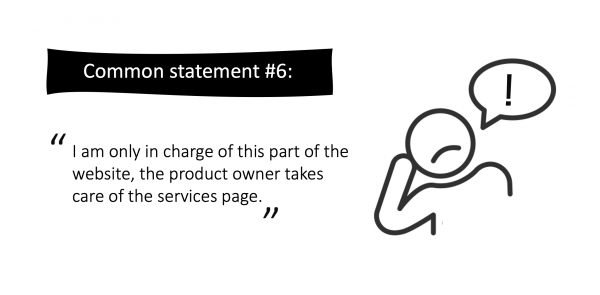
Why we recommend that companies have one single owner for the website:
Having multiple individuals trying to make decisions and contribute to the website’s development can lead to confusion and a less cohesive final result. We recommend our clients to have one clear and accountable person in charge of the website’s direction and decision-making.
7. Ensure adequate resources for thorough QA for tests

Why we recommend that companies have resources and a dedicated QA process:
Surprisingly, a significant number of people overlook the crucial quality assurance (QA) step when conducting A/B tests. As a result, these tests go live with issues and bugs, rendering them useless. It is disheartening to see valuable resources being invested in setting up tests only to neglect proper QA testing. This is one of the most common AB testing mistakes we observe among our customers.
8. Document results meticulously

Why we recommend that companies document their results in a test repository:
After conducting numerous A/B tests, your own memory of what worked may become biased. Having a repository can assist in documenting successful strategies and enabling new team members to quickly familiarize themselves with the findings. Additionally, such a repository can a valuable resource for persuading HIPPOs that a proposed test idea may not be practical as extensive testing on that particular topic has already been conducted. In our experience, the challenging aspect for clients is not setting up such a repository, but rather maintaining it consistently over time.
9. Acknowledge that also losing tests are valuable

Why losing tests should be considered valuable, even if it is difficult:
When a test fails, it helps identify what doesn’t work, what doesn’t resonate with your audience and allows you to refine your approach. A strong testing culture promotes experimentation, sees failing tests as valuable sources of insights and encourages teams to analyze and understand why a test failed, ultimately leading to more successful and impactful tests in the long run.
10. Avoid tracking only micro conversions

Why we recommend that companies always strike a balance between tracking micro and macro conversions:
While tracking micro conversions has its advantages, such as more efficiency in terms of resource allocation and gaining insights into the different stages of the user journey, macro conversions are typically the primary goals that drive revenue and business growth. Increasing conversions in one stage of the user journey does not necessarily result in an increase on the macro conversion level.
11. Focus on key success factors – avoid having too many conversion goals

Why we recommend that companies always have a clear success metric for A/B tests:
Having too many conversion goals can be counterproductive. While data collection is important, it is crucial to have a clear alignment on the key success factors that will be acted upon before conducting any test. In order to obtain actionable data, there must be a explicit agreement within the organization on which metrics to prioritize. We often ecnounter cases where clients insist on tracking numerous metrics, resulting in a lack of clarity and difficulty in determining clear action steps.
12. Refrain from exclusively prioritizing quick wins and short-term tactical experiments

Why we recommend including long-term strategic experiments in your testing approach:
Focusing solely on quick wins might hinder progress towards larger long-term goals. Striking a balance between quick wins and more complex AB tests allows for more exploration and the potential of more groundbreaking discoveries that can drive significant growth. Based on our experience, establishing a well-structured experiment plan and ensuring alignment across the entire team, particularly with the developer who can sometimes be a bottleneck, can contribute to maintaining a healthy balance between less resource-intensive quick wins and more resource intensive experiments.
13. Use your customers’ words, even if they are not industry jargon

Why we recommend that companies do not solely rely on technical or industry-specific language:
We recommend using your customers’ words, even if they are not industry jargon. It is important to communicate in a way that resonates with your customers and speaks to their needs and preferences. Don’t insist on using terms that may be technically correct but not commonly used by your target audience.
14. Regularly update your organization about CRO results
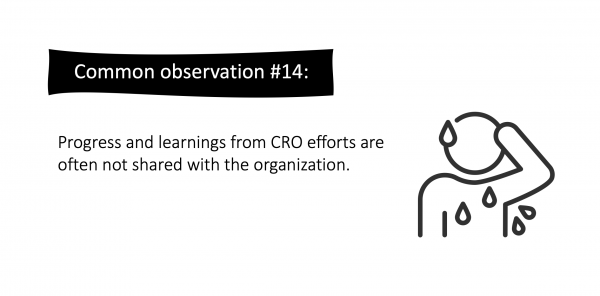
Why we recommend keeping stakeholders informed about outcomes of CRO efforts:
Regular updates ensure that everyone is on the same page, working towards a common goal and enables cross-functional discussions and knowledge sharing. Additionally, these updates help foster a data-driven culture and secure the often scarce and highly contested resources required for conducting the A/B tests outlined in the experiment roadmap.
Do any of these challenges sound familiar to you? Don’t worry, you are not alone. A lot of companies struggle with these challenges as well. Let us know if we can help you progress with your CRO projects.